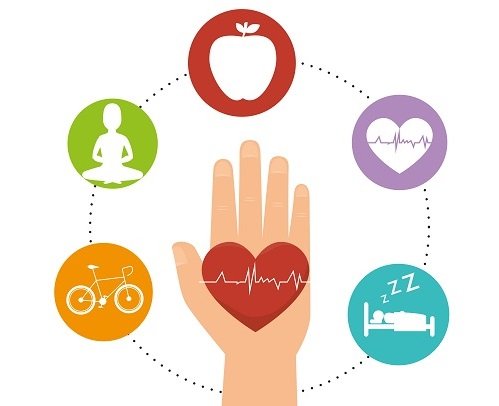Optimize Gut Health: 15 Steps to a Thriving Microbiome

Updated at: 2025-02-28 10:16:02 (9 months ago by Melkisedeck Leon Shine)
Unlocking Digestive Wellness: 15 Strategies for a Thriving Gut
Your digestive health is the cornerstone of overall well-being. A robust gut microbiome—the intricate ecosystem of bacteria residing in your intestines—plays a pivotal role in digestion, immunity, and even mental clarity. Cultivating a healthy gut isn't about restrictive diets; it's about making mindful choices that support your body's natural processes. This article unveils 15 actionable strategies to nurture your gut microbiome and unlock lasting digestive wellness.
1. Embrace Dietary Diversity: A balanced diet is the foundation of a healthy gut. Prioritize a wide array of fruits, vegetables, whole grains, lean proteins (such as fish, poultry, and legumes), and healthy fats (like avocados, nuts, and olive oil). This nutritional diversity fuels the growth of beneficial gut bacteria, creating a flourishing internal ecosystem.
2. Prioritize Fiber Intake: Fiber acts as the essential fuel for your gut's beneficial bacteria. Incorporate fiber-rich foods such as beans, lentils, whole grains (like quinoa and oats), and a variety of fruits and vegetables into your daily meals. This promotes regular bowel movements and prevents constipation, contributing to a smoothly functioning digestive system.
3. Hydration is Key: Adequate hydration is crucial for optimal digestive function. Water helps to break down food, move waste through your system, and maintain the overall health of your digestive tract. Aim for consistent hydration throughout the day.
4. Minimize Processed Foods: Highly processed foods, often laden with unhealthy fats, added sugars, and artificial ingredients, can disrupt the delicate balance of your gut microbiome. Opt for whole, unprocessed foods whenever possible to provide your body with the nutrients it needs to thrive.
5. Manage Stress Effectively: Chronic stress significantly impacts gut health. Stress hormones can interfere with digestion and potentially worsen existing digestive conditions. Incorporate stress-reducing practices such as meditation, yoga, deep breathing exercises, or regular physical activity into your routine to promote a calmer gut and a healthier mind.
6. Moderate Alcohol Consumption: Excessive alcohol consumption can irritate the lining of your digestive tract and disrupt the delicate balance of your gut flora. If you choose to drink alcohol, do so in moderation.
7. Limit Added Sugars and Artificial Sweeteners: Excessive sugar intake, including artificial sweeteners, can feed harmful bacteria in your gut, leading to an imbalance and potential digestive distress. Choose natural sweeteners sparingly, and prioritize whole foods over processed options.
8. Explore Probiotics: Probiotics are live microorganisms that offer various health benefits, including improved digestive health. Incorporate probiotic-rich foods like yogurt (with live and active cultures), kefir, kimchi, and sauerkraut into your diet. You may also consider a high-quality probiotic supplement, but always consult your doctor before starting any new supplement regimen.
9. The Importance of Thorough Chewing: Thorough chewing significantly aids digestion. It breaks down food into smaller particles, making it easier for your body to absorb nutrients and promoting efficient gut function. Chewing also initiates the digestive process in the mouth, setting the stage for optimal breakdown further along in the digestive system.
10. Prioritize Regular Exercise: Regular physical activity stimulates bowel movements and improves overall digestive function. Aim for at least 30 minutes of moderate-intensity exercise most days of the week. This helps maintain a healthy gut microbiome and supports overall well-being.
11. Prioritize Sleep: Quality sleep is crucial for maintaining gut health. Lack of sleep can negatively impact the composition and function of your gut microbiome, potentially leading to digestive issues. Aim for 7-9 hours of restful sleep per night to support your digestive system's natural rhythms.
12. Judicious Antibiotic Use: While antibiotics are sometimes necessary for treating bacterial infections, their overuse can disrupt the delicate balance of your gut microbiome. Only use antibiotics when prescribed by a healthcare professional, and consider strategies to support gut health during and after antibiotic treatment.
13. Fermented Foods for a Flourishing Gut: Fermented foods, like kefir, kombucha, and miso, are rich in beneficial bacteria and contribute to a more diverse and resilient gut microbiome. Incorporating these foods into your diet can provide a significant boost to your gut health.
14. Harness the Power of Prebiotics: Prebiotics are non-digestible fibers that serve as food for your beneficial gut bacteria. Include prebiotic-rich foods, such as garlic, onions, bananas, and asparagus, in your diet to foster the growth of healthy bacteria.
15. Listen to Your Body: Individual responses to different foods vary. Pay close attention to how different foods affect your digestion and overall well-being. Adjust your diet accordingly to find what works best for your unique gut microbiome.
Improving your digestive health is a continuous journey, not a destination. By incorporating these 15 strategies into your lifestyle, you'll pave the way for optimal digestive wellness, impacting your overall health and vitality. Remember, consulting with a healthcare professional or registered dietitian can provide personalized guidance tailored to your individual needs and health status.




